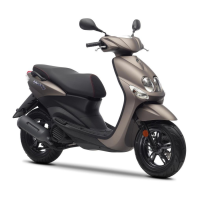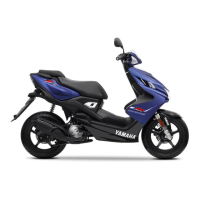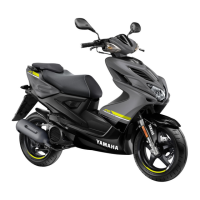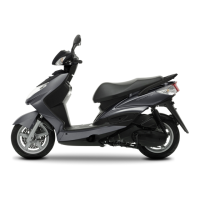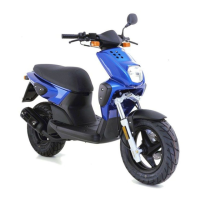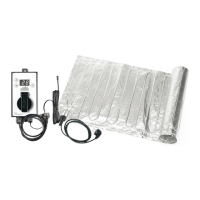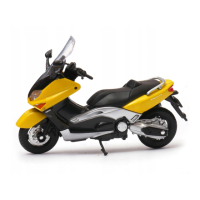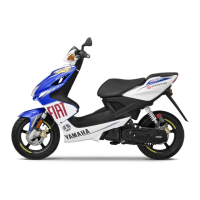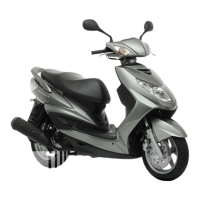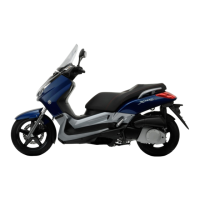Do you have a question about the Yamaha NEO'S YN50FU and is the answer not in the manual?
Owner's responsibility for safe operation and proper riding techniques.
Perform pre-operation checks and follow safe riding practices.
Importance of helmet, face shield, gloves, and protective clothing.
Hazards of carbon monoxide and necessary safety precautions.
Guidelines for adding accessories and cargo to maintain stability.
Benefits and recommendations for genuine Yamaha accessories.
Risks and responsibilities associated with aftermarket parts and modifications.
Instructions for safely transporting the scooter in another vehicle.
Additional tips for safe riding, including signaling and road hazards.
Identification of key components on the left side of the scooter.
Identification of key components on the right side of the scooter.
Overview of handlebar controls and instrument panel layout.
Explanation of main switch positions and steering lock function.
Description of various indicator and warning lights on the dashboard.
Details of the digital display, including speedometer and indicators.
Operation of odometer, tripmeter, and fuel gauge functions.
Explanation of the self-diagnosis device for the fuel electrical circuit.
Operation of left and right handlebar switches (dimmer, turn signal, horn, start).
Location and operation of front and rear brake levers.
Importance of fuel, refueling safety, and avoiding overfilling.
Checking and maintaining the fuel tank breather hose and catalytic converter.
How to use the kickstarter and access the seat compartment.
Location, capacity, and usage guidelines for the under-seat storage compartment.
Load limit for the luggage hook.
Checks related to the fuel system before operation.
Checks for engine oil level and leakage.
Checks for coolant level and cooling system leakage.
Checks for front and rear brake operation, pads, fluid level, and free play.
Checking throttle grip, control cables, and chassis fasteners.
Checking tire condition, pressure, and battery electrolyte level.
Checking operation of instruments, lights, signals, and switches.
Step-by-step procedure for starting the engine, including safety warnings.
Procedure for starting off, including warming up the engine and moving off.
Safe braking techniques and advice on riding for better fuel economy.
Important procedures for engine break-in and safe parking.
Schedule for emission control system maintenance based on mileage.
Schedule for general maintenance and lubrication tasks.
Procedures for removing and reinstalling body panels for maintenance access.
How to check the condition of the spark plug and interpret its state.
Procedures for checking engine oil level and changing oil/cleaning strainer.
Procedures for checking and changing the final transmission oil.
Procedures for checking and adding coolant.
How to replace the air filter and clean the check hose.
Checking throttle grip free play, valve clearance, and tire basics.
Recommended tire pressures, inspection methods, and approved tire models.
Inspection of cast wheels, brake pads, and brake shoes for wear.
Checking brake fluid level, changing fluid, and lubricating control cables.
Checking centerstand, front fork operation, and steering bearing condition.
Checking front and rear wheel bearings for play or smooth operation.
Checking battery electrolyte level and procedures for storing the battery.
How to replace a blown fuse, including warnings.
How to replace headlight, turn signal, and tail/brake light bulbs.
Introduction to troubleshooting procedures for common starting and performance issues.
Troubleshooting steps and precautions for engine overheating.
Precautions for cleaning matte colored finished parts.
General advice on regular care to maintain the scooter's appearance and performance.
Cleaning procedures after normal use and exposure to salt.
Guidelines for short-term and long-term storage of the scooter.
Key physical dimensions and curb weight of the scooter.
Engine type, displacement, oil, fuel type, capacity, and spark plug details.
Details on transmission, brake types, fluid, suspension, wheels, and tires.
Ignition, charging, battery, headlight, and bulb specifications.
Tire sizes, wheel types, rim sizes, and tire pressure recommendations.
Main fuse rating for the electrical system.
Importance of recording vehicle identification numbers for security and parts ordering.
Location and purpose of the model label for ordering spare parts.
